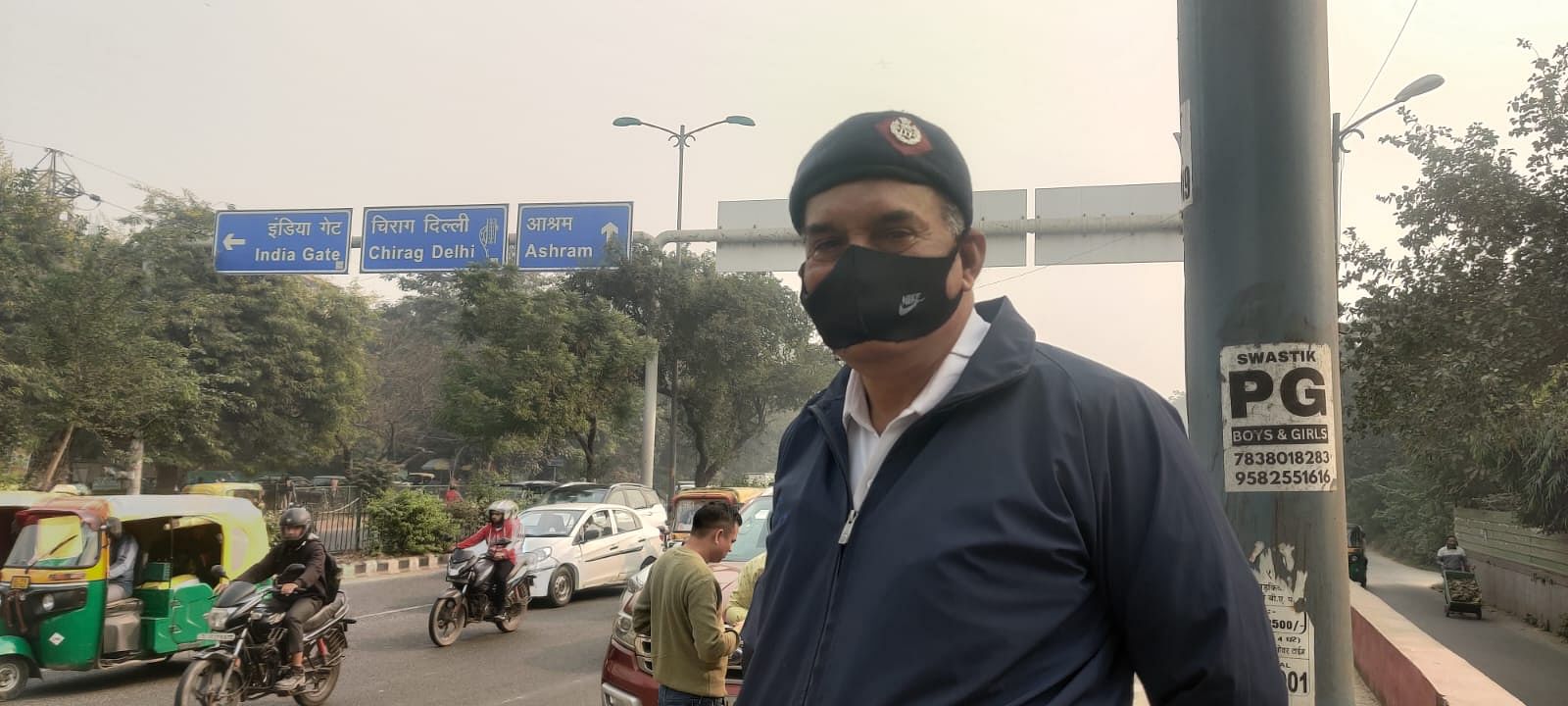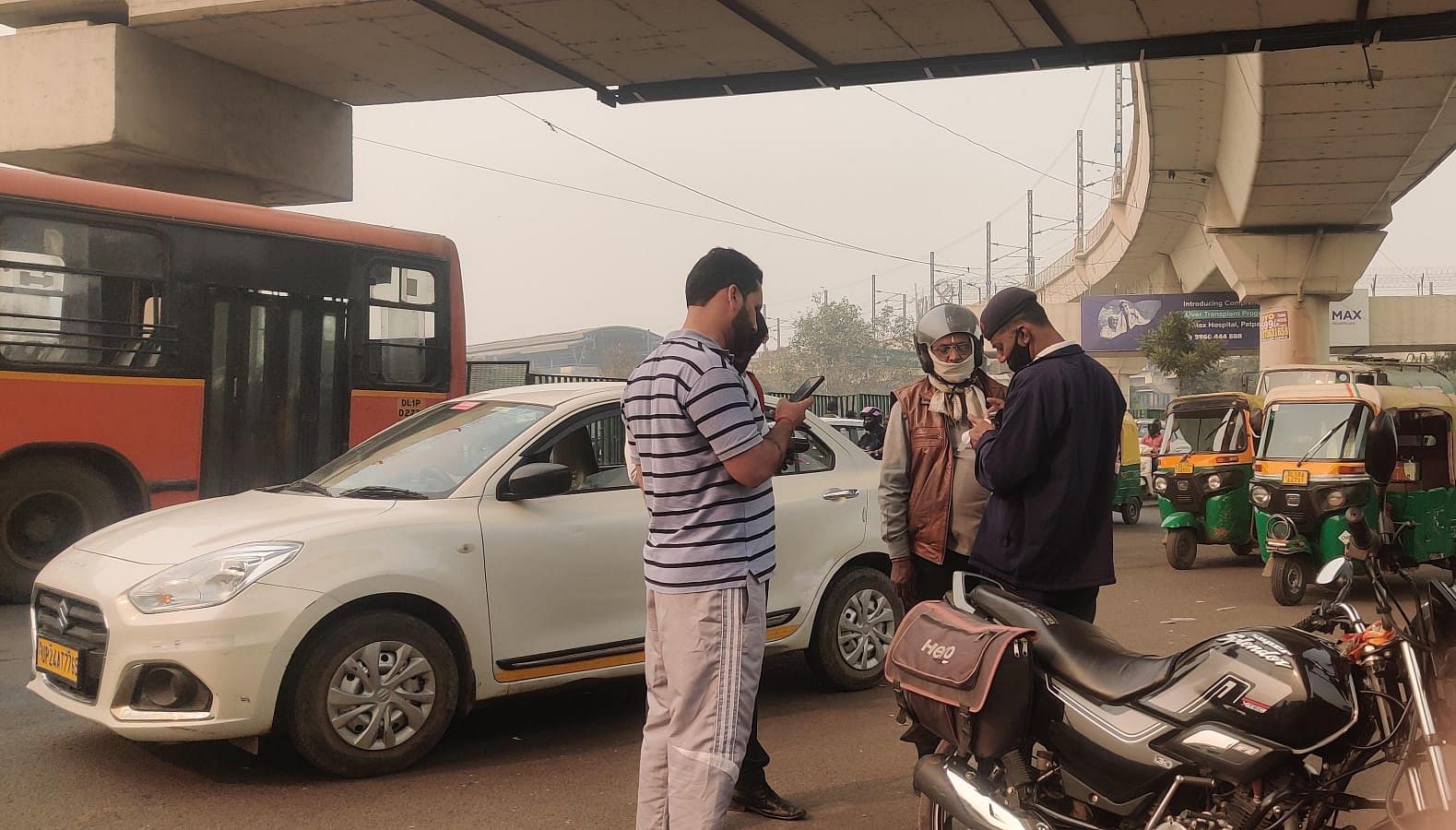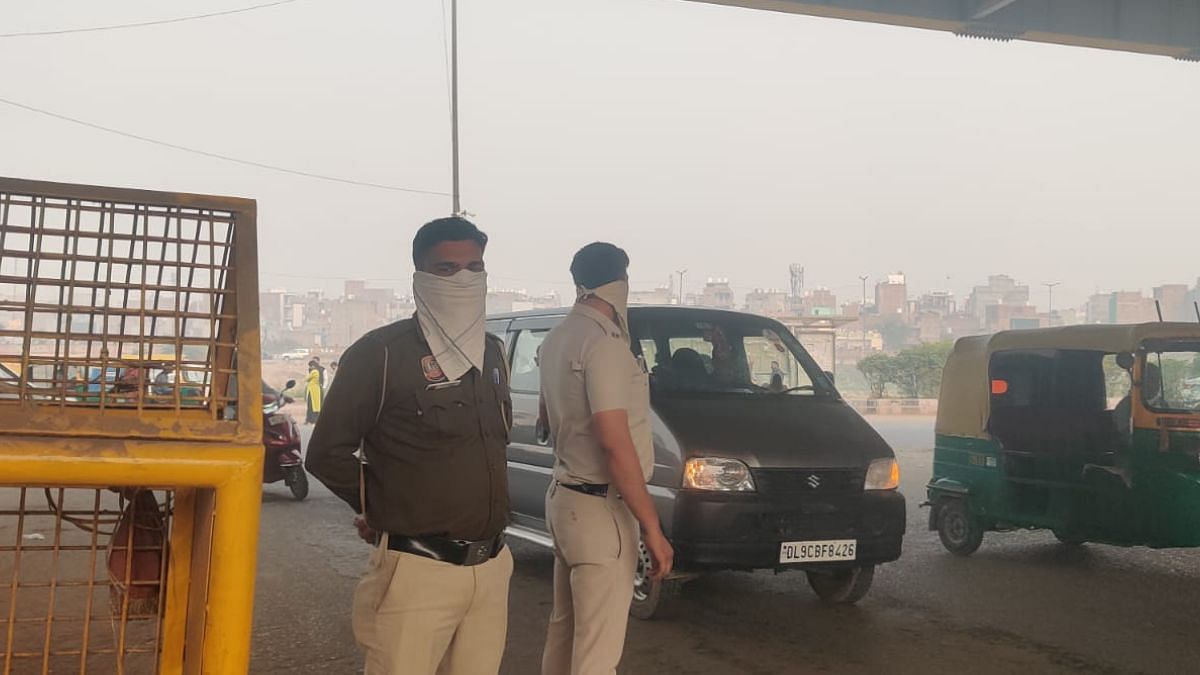New Delhi: Amid Delhi’s murky haze and smog clinging to the streets like a toxic shroud Tuesday, 43-year-old Reema stood resolute on the pavement, her face covered by a black mask. A head constable with the Delhi traffic police, she waved down cars at ITO to enforce pollution checks, while the smog stung her eyes and made her breath laboured beneath the mask.
Her working conditions mirror those of most of the city’s traffic police officers, who face the toxic smog day after day. While the government provides them with N95 masks, health experts argue that gas masks would provide better protection. The health impact of the pollution, however, is not limited to lungs, they say.
“I have to be here, no matter what. It’s my duty,” Reema said, adjusting the mask on her face as vehicles whizzed past her. “The past two weeks have been especially tough. My throat aches constantly, and my eyes won’t stop watering. On top of that, travelling from outer Delhi takes me nearly an hour and a half every day.”
When off-duty, Reema, a marathon runner, has been training for an upcoming event in Ahmedabad, Gujarat. However, the choking pollution has thrown her training routine into disarray.
“I’ve stopped running in the mornings,” she said. “Instead, I’m focusing on core exercises like sit-ups, push-ups and squats at home. It’s the only way to keep up in this air.”

Delhi has witnessed an alarming spike in pollution levels over the past week, with Monday seeing the AQI hit a staggering 494—one of the highest in recent years. On Thursday, at 2 pm, the air quality was in the “very poor” category, with an overall AQI of 373. Hotspots like ITO, Jahangirpuri, Sonia Vihar, Anand Vihar, and Punjabi Bagh reported alarming AQI levels of 339, 434, 394, 401, and 404, respectively.
Hospitals have seen a spike in the number of patients suffering from respiratory issues.
Yet, amid the crisis, Delhi’s police officers continue to brave the city’s toxic roads, standing outdoors for over 10 hours a day as they carry out their duties. Many of the cops describe this as the worst smog Delhi has ever seen, but for these officers, it’s become a grim routine—something they’ve unwillingly grown accustomed to.
“Sometimes, we have to work longer shifts, and it gets really tough,” said Hemraj Meena, a head constable with the Delhi Traffic Police stationed at Dhaula Kuan. “The pollution makes me feel dizzy at times. When I wake up in the morning, I cough up black phlegm, and I often feel feverish.”
Another officer who did not wish to be named, wearing a simple cloth mask, explained the dilemma they face. “Wearing the mask for long hours makes it hard to breathe, but without it, the situation is even worse. Either way, it’s a struggle,” they said.
Also Read: Delhi’s AQI at 494, one of the ‘worst pollution spells’ since 2022
‘Impact not contained to lungs’
Dr Sudhir Gupta, a pulmonologist at Kailash Hospital, emphasised the severe impact of constant pollution exposure on these police officers. “For them, standing in this pollution day in and day out, whether it’s summer or winter, is equivalent to inhaling 10 to 40 cigarettes a day,” he said.
Most police officers were seen wearing cloth masks or handkerchiefs, though they mentioned that the N95 masks provided to them last year have yet to be distributed this year. However, Dr. Gupta pointed out that while N95 masks offer some protection, they are not significantly effective in this environment.

“Traffic police officers are exposed to harmful gases, like Nitrous Oxide, Sulphur Dioxide and Carbon Monoxide from vehicles,” he explained. “Gas masks would provide more effective protection, even though they can be uncomfortable since they cover both the mouth and nose. But in terms of safety, they would be far more effective.”
He also explained how the effects of the pollution are not contained to lungs. PM2.5 and PM10 particles (particulate matter), when inhaled, travel into the lungs and cause inflammatory reactions. This, he said, can result in an itching sensation in the throat, followed by a persistent cough and difficulty breathing as the particles settle in the lungs. Additionally, when these particles come into contact with the skin, they can cause dryness, leading to allergies and itching.
Many officers shared that while they are used to Delhi’s polluted winters, the situation has significantly worsened over the years. “There was pollution earlier, too, but it was never this bad,” said a police officer on patrol duty stationed at Jahangirpuri. “Now, we’re coughing constantly, and our eyes burn so much they won’t stop watering.”
Another officer on patrol duty at Wazirpur, covering his face with a handkerchief, shared that his eyes were burning and had turned red. He added that he might need to consult a doctor if the condition worsens.
K. Jegadeesan, special commissioner of police-traffic, Zone-I told ThePrint that the traffic personnel have no choice but to remain on the streets due to the nature of their duties. “Within those constraints, we are doing everything possible to ensure their health.”
N95 masks are being provided to personnel and their deployment locations are rotated to minimise prolonged exposure to pollution, Jegadeesan explained. “For instance, an officer stationed at ISBT Kashmere Gate, which sees a massive flow of vehicles, will be reassigned to a less polluted area after 15 days,” he added.
Amid these challenges, many officers have turned to “ghar ke nuskhe” (home remedies), with jaggery and hot water being a go-to fix. Many just take two or three strepsils in a day. “When I get home, I make the ‘kadha‘ (herbal concoction) I used to prepare during COVID. It’s made with cardamom, cloves, dry ginger, basil leaves and honey,” shared one officer stationed at Anand Vihar.

Dr. Nikhil Modi, a Pulmonology and Respiratory Medicine specialist at Apollo Hospital, highlighted the long-term effects of prolonged exposure to pollution.
He explained, “It can cause permanent lung damage in the form of Chronic Obstructive Pulmonary Disease (COPD), making the lungs more vulnerable to pollutants. These pollutants can enter the bloodstream, leading to blockages in blood vessels, which in turn increase the risk of heart attacks, lung cancer and brain strokes.”
Dr Modi also emphasised the importance of wearing masks, advising that standard masks should be replaced every six to eight hours. Continuous exposure reduces their filtration capacity, rendering them less effective.
He also mentioned that while home remedies may provide temporary symptom relief, the underlying damage caused by pollution often progresses silently. This damage, including changes to the airways, fibrosis and scarring of lung tissue, can result in chronic conditions like COPD.
Such damage is often irreversible and can lead to permanent breathing difficulties, even if exposure to pollution is reduced or eliminated, he said.
(Edited by Mannat Chugh)
Also Read: As Delhi chokes, city hospitals see surge in patients reporting ‘incessant cough, pounding headache’

